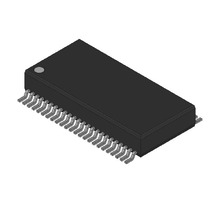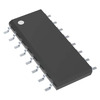Manufacturer Part Number
CDC318DLR
Manufacturer
Texas Instruments
Introduction
The CDC318DLR is a high-performance clock buffer and driver from Texas Instruments. It is designed to provide clean, low-jitter clock signals for a wide range of applications, including high-speed digital systems, data communications, and precision timing circuits.
Product Features and Performance
High-speed operation up to 1.2 GHz
Low additive jitter of less than 1 ps RMS
High output drive capability of up to 50 mA per output
Differential or single-ended input and output options
Configurable output enable/disable function
Supports multiple power supply voltages (1.8 V, 2.5 V, 3.3 V)
Product Advantages
Excellent clock signal integrity for reliable system performance
Flexible configuration options to meet diverse design requirements
High drive strength to support heavy load applications
Low power consumption for energy-efficient designs
Key Reasons to Choose This Product
Industry-leading clock performance with low jitter and high speed
Robust and configurable design to fit a wide range of system requirements
Trusted Texas Instruments quality and reliability
Cost-effective solution for high-performance clock distribution
Quality and Safety Features
Extensive reliability testing and qualification
Compliance with industry safety standards
RoHS and lead-free construction
Compatibility
The CDC318DLR is compatible with a variety of digital logic families, including LVCMOS, LVDS, and LVPECL.
Application Areas
Networking and telecommunications equipment
High-speed digital systems
Data centers and enterprise computing
Industrial automation and control
Medical imaging and diagnostic equipment
Product Lifecycle
The CDC318DLR is an active product in the portfolio. There are no known plans for discontinuation at this time. We offer a range of alternative clock buffer and driver products that may be suitable for similar applications. Customers are encouraged to contact our website's sales team for more information on available options and to discuss their specific design requirements.





 CDC318ADLTexas InstrumentsIC CLK BUFFER 1:18 100MHZ 48SSOP
CDC318ADLTexas InstrumentsIC CLK BUFFER 1:18 100MHZ 48SSOP CDC319DBRTexas InstrumentsIC CLK BUFFER 1:10 100MHZ 28SSOP
CDC319DBRTexas InstrumentsIC CLK BUFFER 1:10 100MHZ 28SSOP CDC3257G-QK-C237506GSD0MICRONS
CDC3257G-QK-C237506GSD0MICRONS